
Scientific name: Phyllidia varicosa
Size: Average size 2.3 inches, can go up to 4.3 inches
Color: Blue, gray, black and yellow
Distinguishing feature: Numerous irregular protuberances of gray or blue and yellow base at the top
Where did we see it: Bali and Gili, Zanzibar, Thailand, Mayotte, Maldives, Raja Ampat
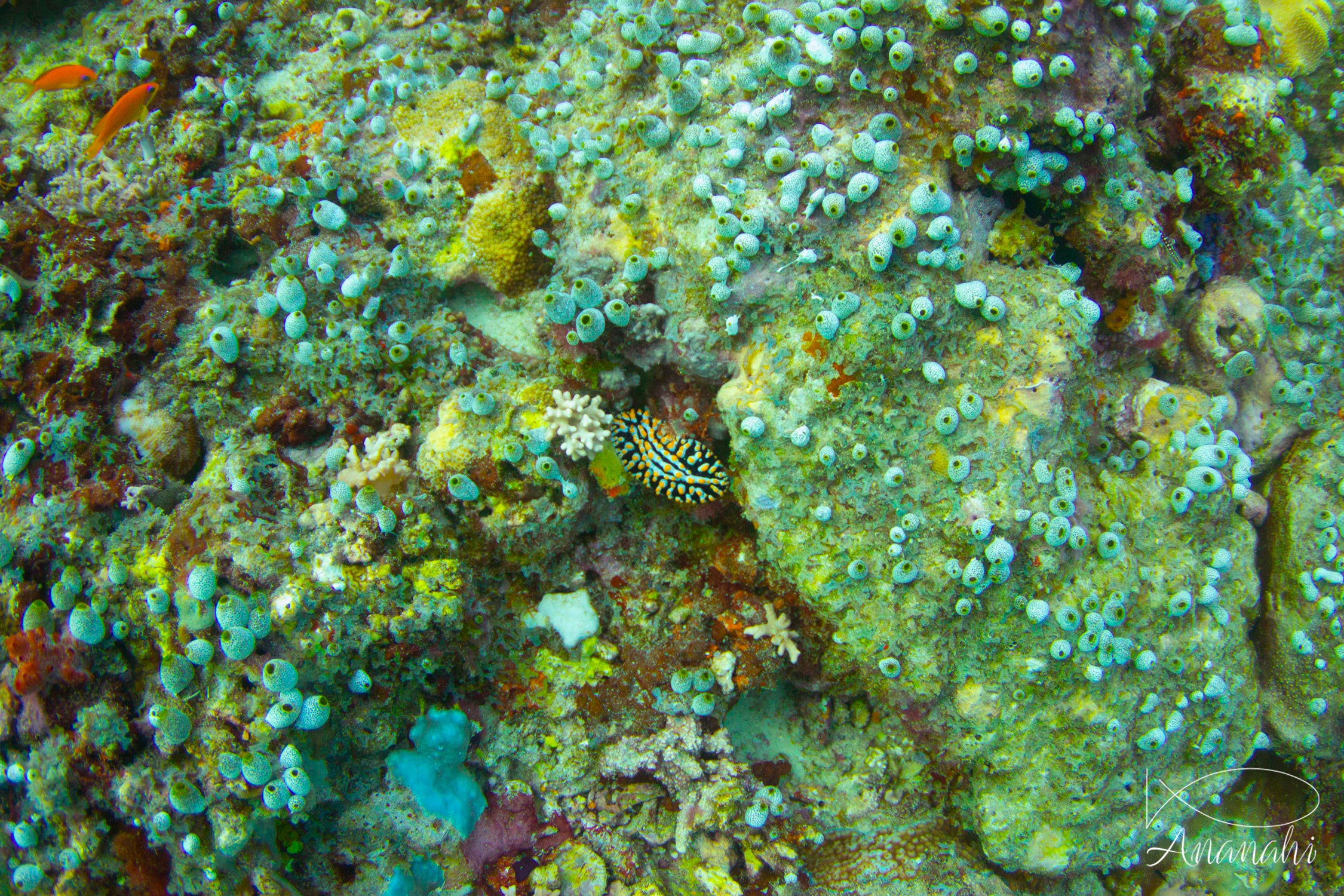
Scientific name: Phyllidia varicosa
Size: Average size 2.3 inches, can go up to 4.3 inches
Color: Blue, gray, black and yellow
Distinguishing feature: Numerous irregular protuberances of gray or blue and yellow base at the top
Where did we see it: Bali and Gili, Zanzibar, Thailand, Mayotte, Maldives, Raja Ampat
This nudibranch mainly feeds on sponges. These sponges allow it to secrete a toxin that allows it to defend itself against shrimp attacks for example.
It's a nudibranch quite easy to find, quite big and colorful.
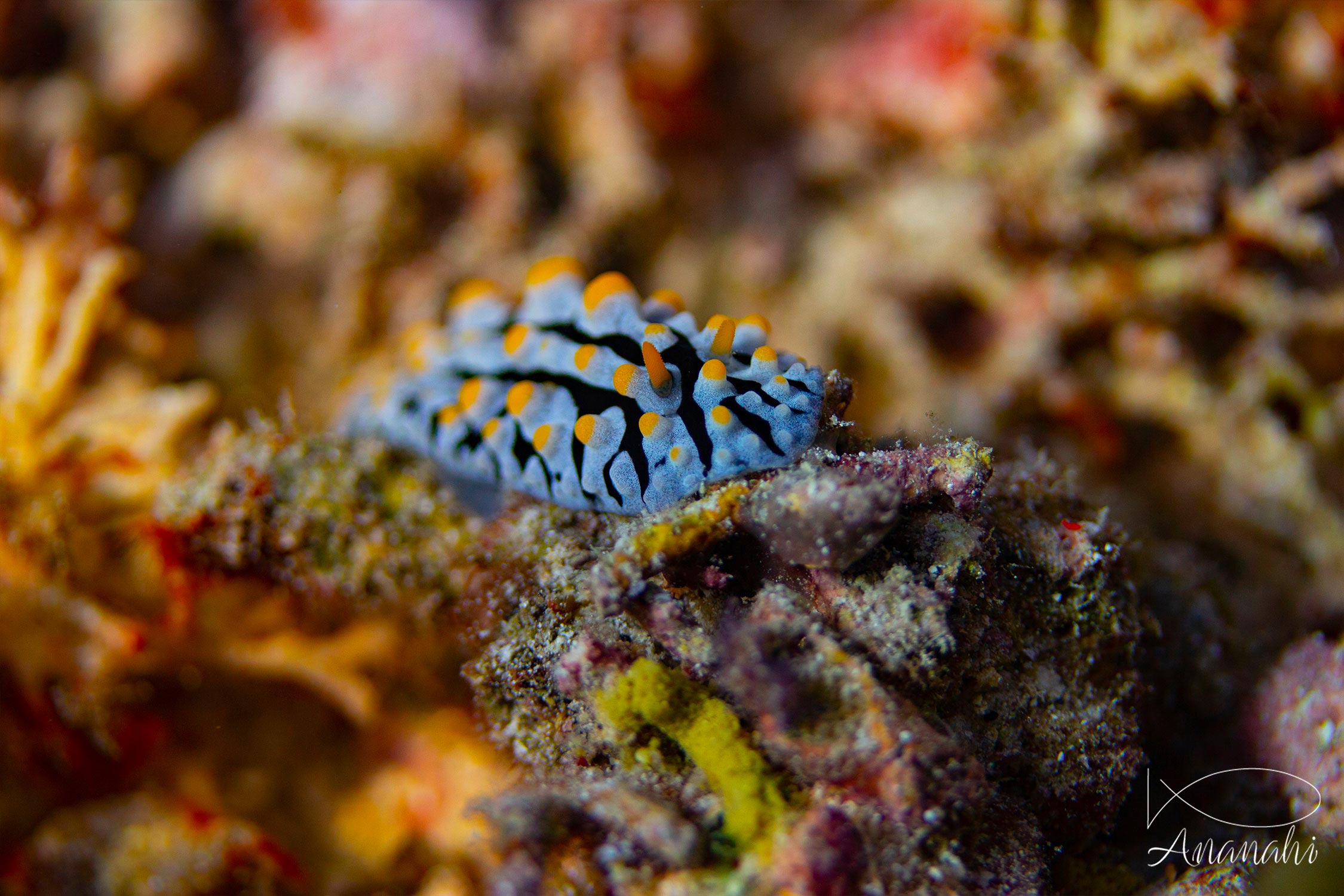

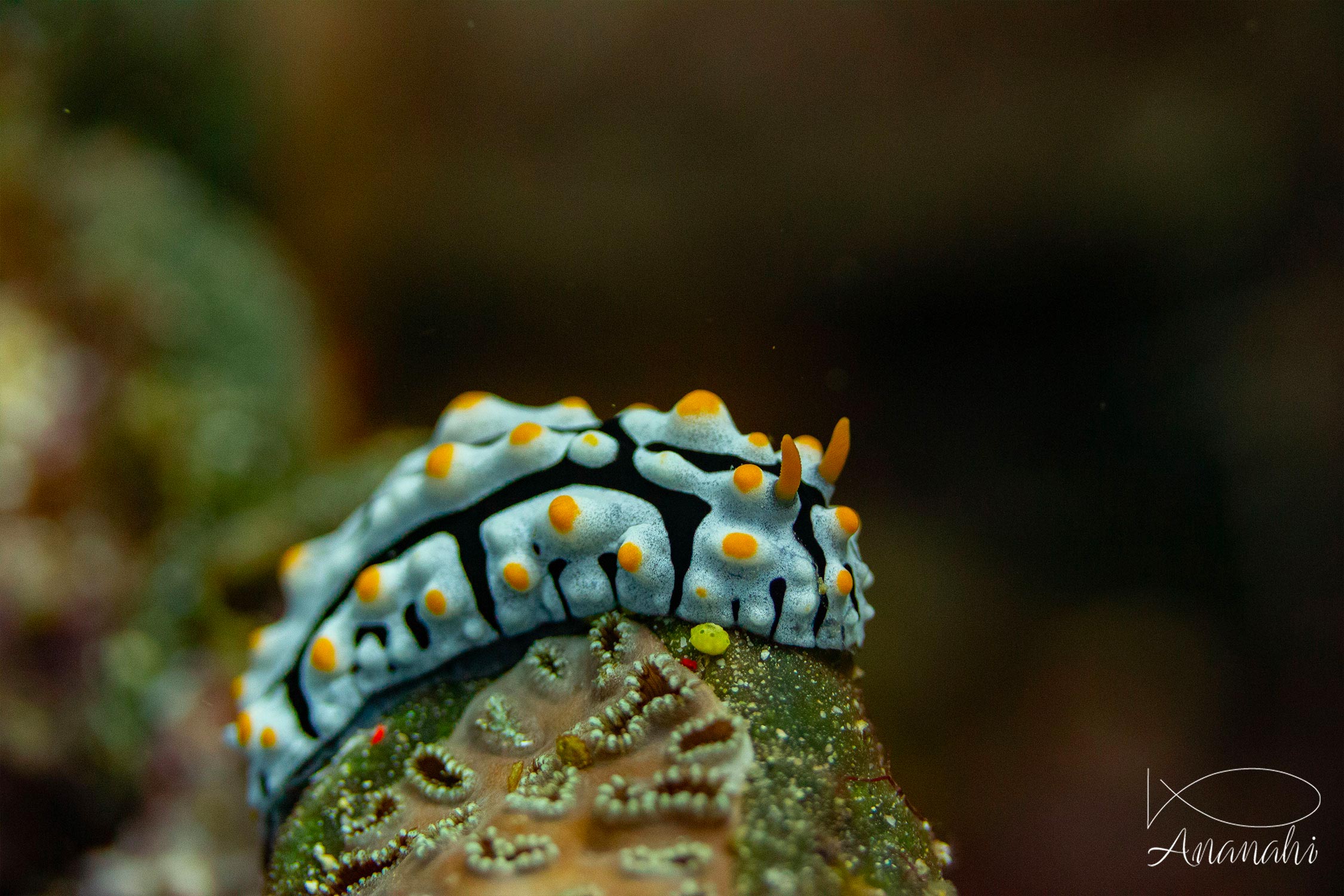
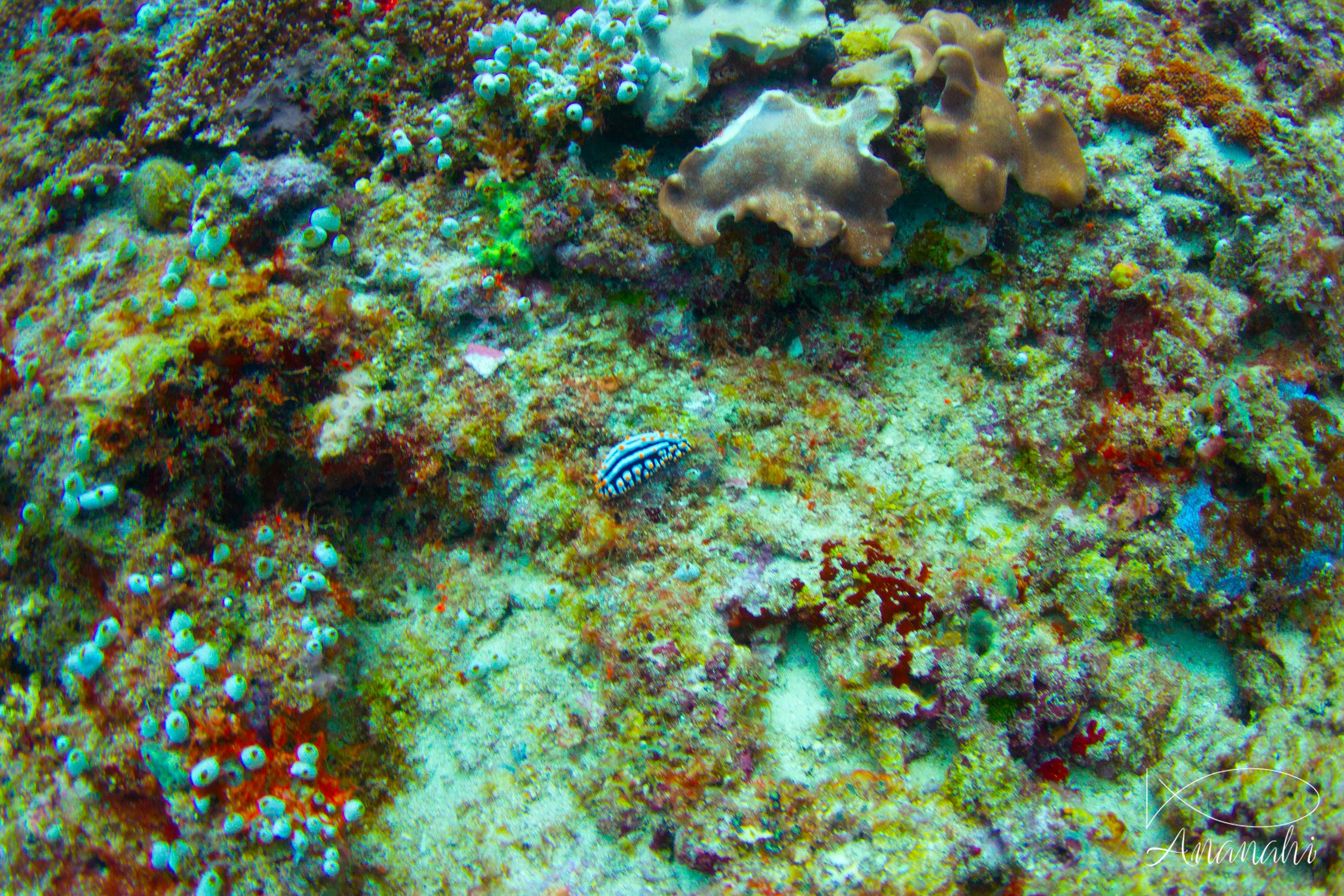



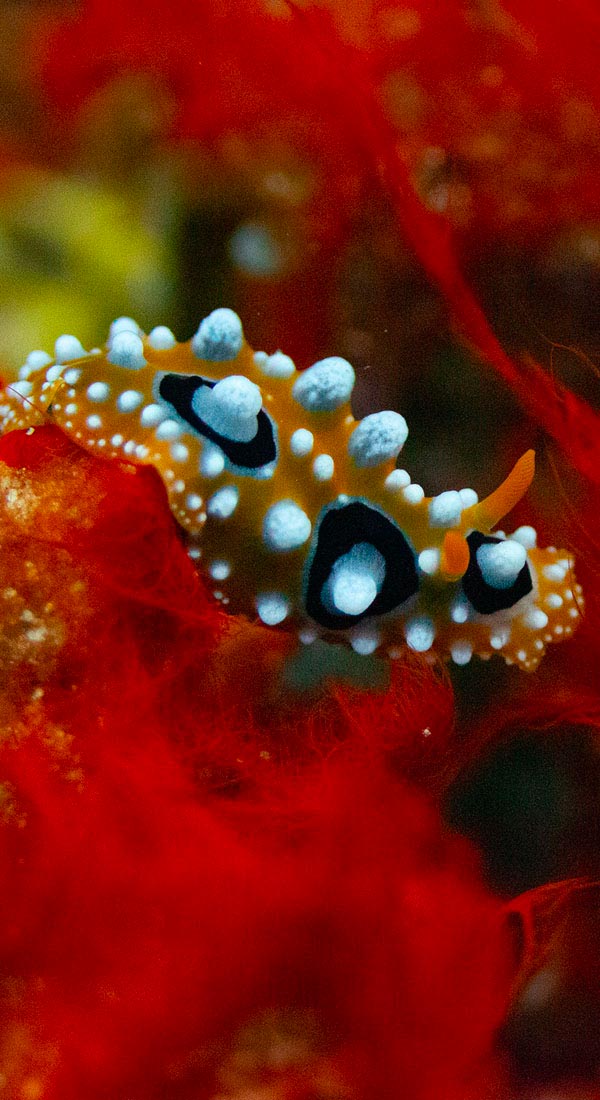
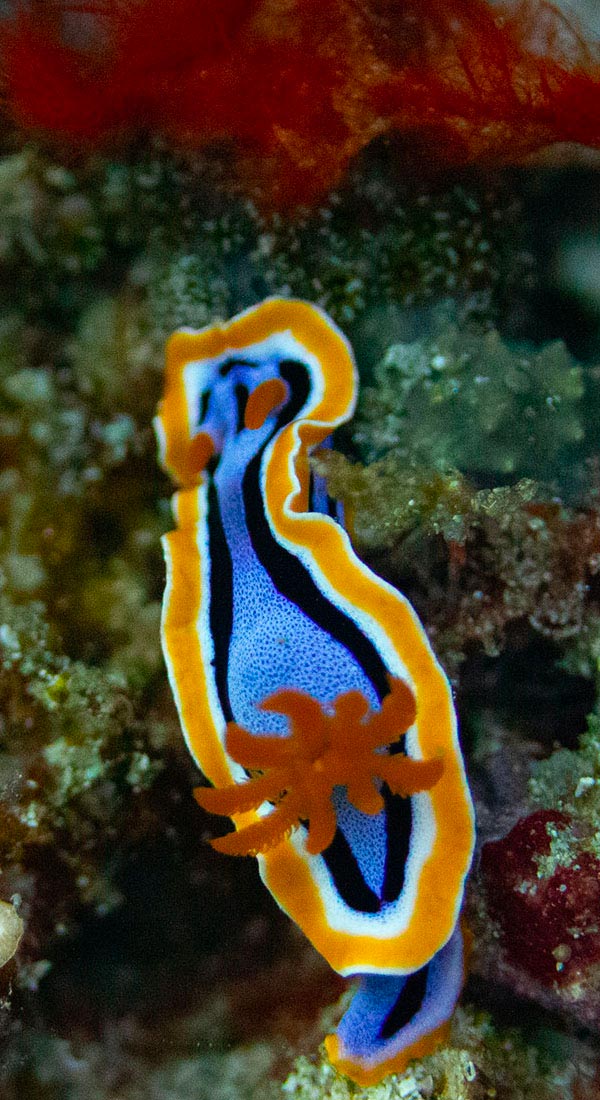

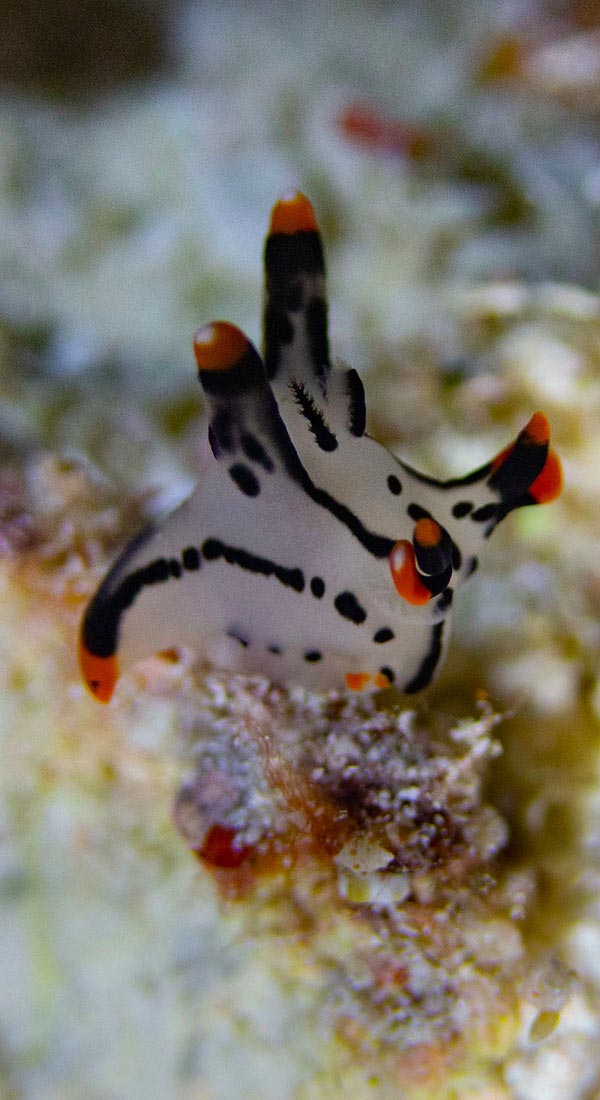

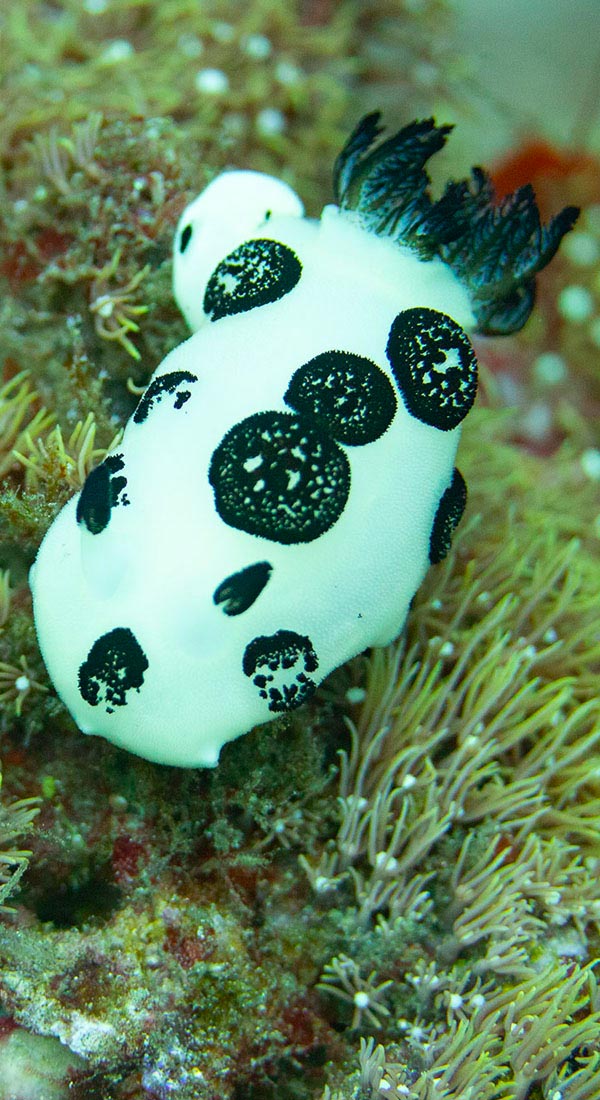

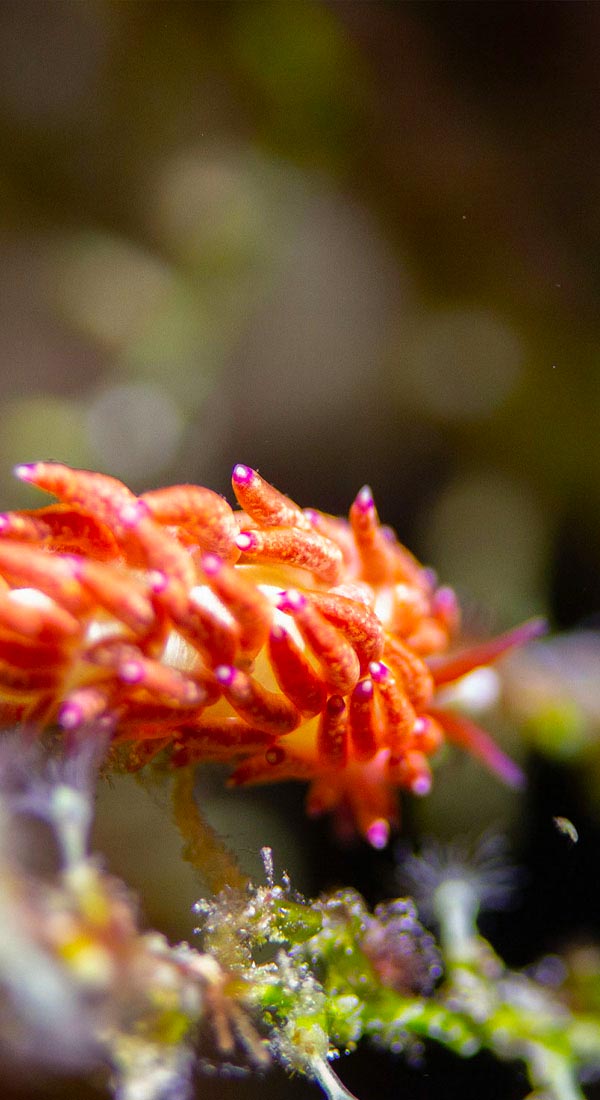
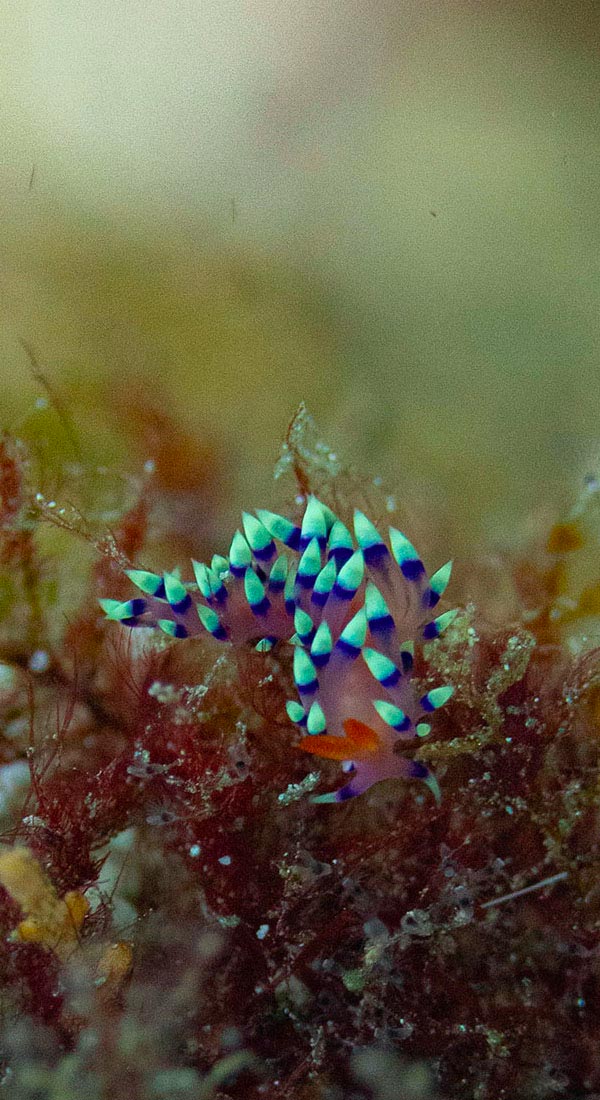

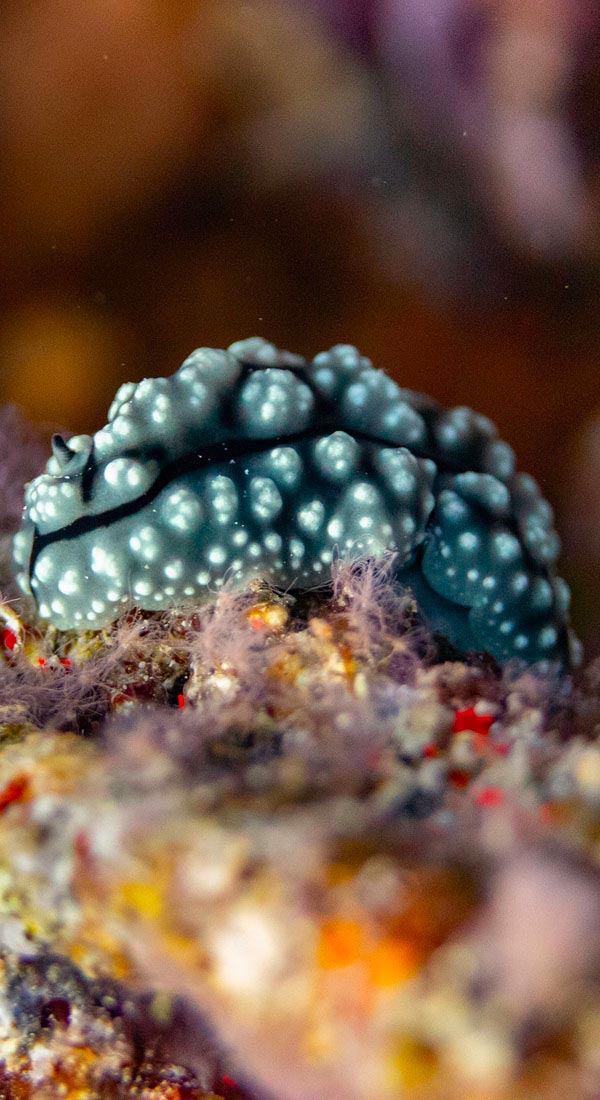
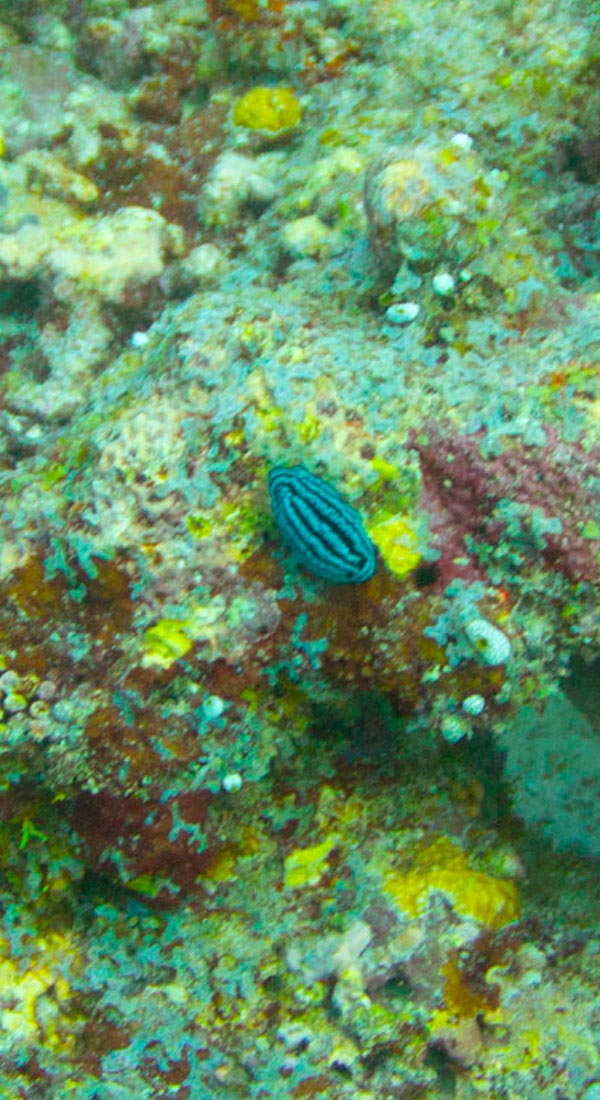


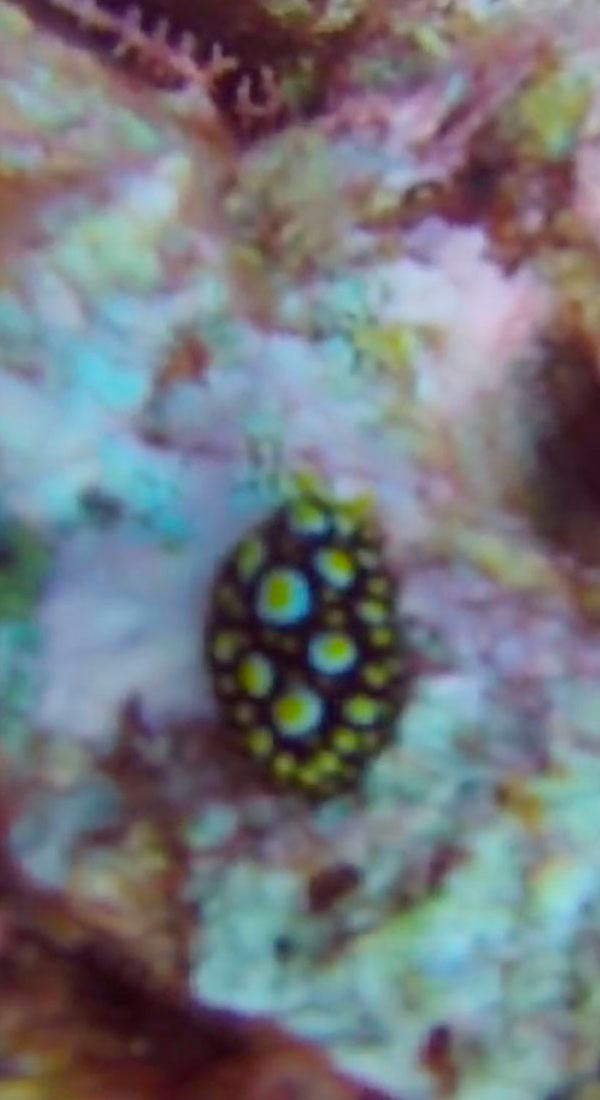
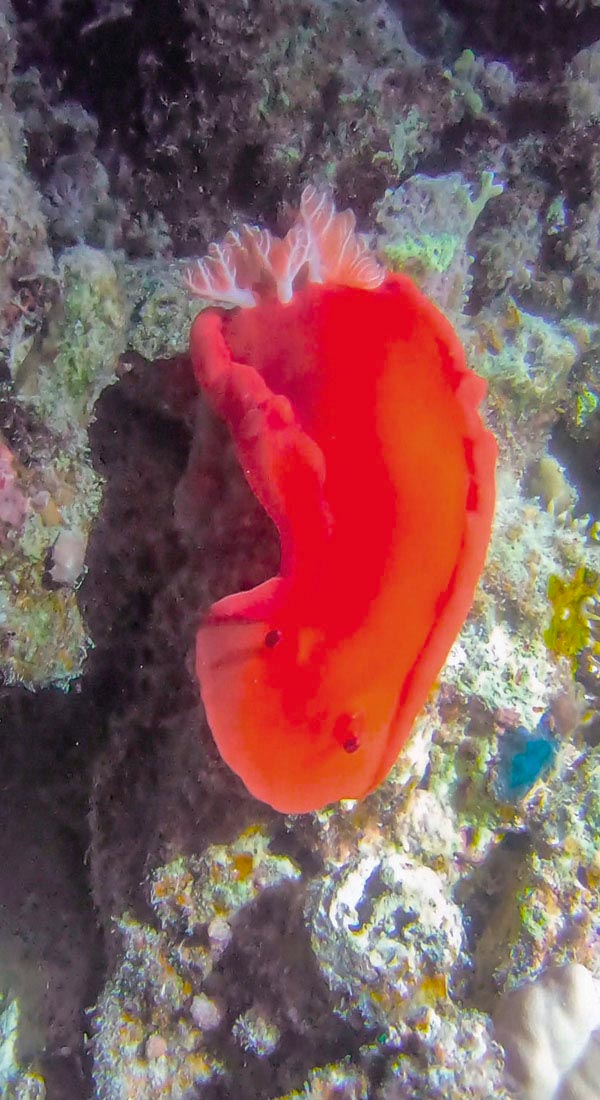
The whale shark is the largest fish in the world!
Some whales are larger, but they are mammals, not fish!
Some sharks can stay motionless on the sand (white tips reef sharks, nurse sharks, etc.).
These sharks don't have to swim to bring oxygen to their gills like other sharks (grey, hammerheads tc.)
Parrotfish create a protective envelope around them when they are sleeping.
So, don't put the light on them during night dive to don't to wake them up and break this envelope.